Today, the tenth day of our trip, we would hear a lecture from the Teacher's Assistant of our class, Kyle Bartch, about how to obtain drinking water in a survival situation.
Having drinkable water in a survival situation is crucial. Unlike food, which you can go three weeks without, you can only last three days without water. A person's daily intake of water is usually around 2-3 liters, but in a survival situation you will get much less then that. So, you are stuck in the wilderness and your water bottle runs dry, what do you do? Kyle explained to us some of the indicators that water is near by. You can follow a game trail, since they are going to be stopping for water at some point. Another indicator of water is bees. There is going to be some source of water within five miles of where ever bees are present. Okay, so, you followed some coyote foot prints to a stream. Just because animals drink from that stream does not mean it is safe for us to drink. We have to clean it!
How? First off, the slowest moving parts of the body of water are where you want to collect water from. The water here has less sediments in it, and is cleaned more thoroughly by UV rays then fast moving water. Also, any viruses present in the water are going to settle at the bottom in slow pace water flows, so collecting water from the top is much safer. There are multiple tools Kyle showed us that can make water safe to drink...
Ceramic Water Filters
This filter will get almost all of the viruses and bacteria out of the water you collect. You want to make sure you get a 0.5 micron filter. You also want to be able to measure how close the actual filter inside the tool is to being finished. it would be pointless to have one of this with an out of date filter inside.
UV Pen
Using this pen exposes the viruses and bacteria in water to UV radiation. This then deactivated them and makes your water suitable for drinking.
Another method is to boil the unsafe water you have and set up a shirt or tarp over top of it. The purified water vapors will then be collected in the material above and safe to drink! This can also be done with urine if water is unavailable. If you have none of these tools available to clean your water, you can tap into the water table. Go a few feet away from the body of water you have found and dig a hole until you have reached the water table. Let the hole fill up with water and the sediments will actually filter your water.
Kyle also demonstrated how to collect water if unable to find an actual water source.
Solar Still
The diagram above exemplifies how a solar still works. Using heat from the sun, and the moisture in the ground, pure water vapor condenses on the plastic sheet and flows right into the container underneath. This can produce up to 1 pint of water a day if done correctly.
An alternate form of a solar still is done by collecting green leaves and stuffing them in a plastic bag. You then connect the bag to the end of a tree branch, in an area with sun light. Condensation will soon start to form and water is collected in the bag.
There are also plants that naturally store water called succulents. The most commonly known succuelents are cactuses. You can collect succulent plants and retrieve the water that is inside them.
Being hydrated is crucial for survival, so conserving the water you collect is not of much significance. Digestion of food requires the use of water, so minimizing your food intake when low on water is really helpful. Learning all of this information about obtaining safe drinking water made me a lot more comfortable with being in the wilderness. There are so many tools (whether you bring them with you or find them in nature) that can be used to filter water.
Once Kyle's presentation concluded, we left New Hampshire and headed for the Food & Water Watch office of Portland, Maine. Here we had a discussion with three women, all with some involvement in the water, food, and the legislation pertaining to water and food, of Maine.
Nhisa Swinton is organizer of the Food & Water Watch in Maine. Nhisha's goal is pass legislation that gets water to be considered public trust, rather then privately owned. Unfortunately, Maine is susceptable to the 'revolving door policy.' The revolving door policy is when rotation of personnel between working for an industry and working for the section of the government who regulates that industry. Nestle is the corporation that seemed of most concern to Nhisha. CEO's of the Nestle in Maine have now rotated into environmental legislative roles. These people are obviously going to put leanient environmental legislation in place that does not cut into their revenues. Nestle, the multinational water bottler which owns Poland Springs, has 11 wells and two bottling sites in Maine. They extract millions of gallons of groundwater each year from communities throughout the state of Maine. Establishing groundwater in the public trust would help protect groundwater resources from degradation and harm by placing its ownership in the hands of the collective public. Doing so would make it more difficult for bottled water companies to extract large quantities of water. Through numerous projects Nhisha, and the Food and Water Watch organization, work to protect the water that the people of Maine deserve.
Lisa Fernandes spoke next. Lisa is the organizer and founding member of Portland Maine Permaculture and the Director of The Resiliance Hub. She is a permaculture designer and teaches people how to impliment permaculture to their lives. What's permaculture? Permaculture is a design system and set of techniques that allows for truly sustainable human habitats and healthy ecosystems. Permaculture draws from organic farming, agroforestry, integrated farming, sustainable development, and applied ecology.

Through community involvement, Lisa strives to get more food from Maine onto the plates of Maine's people. About 80% food in Maine is imported which forces them to be dependent on fossil fuels. What will happen to the people of Maine if they no longer have access to fossil fuels? Permaculture allows for completely self sustaining food supplies. So, in the case of an oil crisis, people will not go hungry. Lisa's Resiliance Hub organizes activities such as workshops, work parties, full permaculture courses, conferences, guest speakers, movie nights, and field trips, to educate people sustainable living.
The number of farms in Maine are growing. Maine is also home to the largest and oldest Organic Farming Association in the United States. Lisa seems to be hopeful for Maine's conversion to permaculture, and I think she should be. People across the country are starting to know what permaculture is and how beneficial it can be to them.
Next, we heard from Erin who works for Congress woman Chellie Pingree. Chellie represents the 1st district of Maine and has been an organic farmer all of her life. The piece of legislation that these women wrangle the most is the Farm Bill. This bill defines all of the agriculture policies in the United States. Here is where you will find all of the subsidies given to certain types of crops and farmers. Crop insurance subsidies give farmers and ranchers a safety net payment in the event of bad weather or other crop damage. This doesn't sound so bad, we're protecting our farmers and therefore the food that feeds American people, are we not? No. The farmers benefiting from these subsidies are not small town farmers working to provide their families with income. Only ten percent of the farms in the United States collected 75 percent of the subsidies given out. An act of Congress in 2000 prohibits the release of information about who those farm subsidy recipients are and how much they receive each year. But, you can be sure that the farms collecting these subsidies are the large, industrialized farms with the biggest income levels. Corn, wheat, and cotton are the top three subsidy recieving crops. Corn, to feed our livestock, wheat to feed us with carbohydrates we don't need, and cotton to make clothes we unnecessarily buy.
To combat the issues caused by the Farm Bill, Chellie Pingree has introduced the Local Farm, Food, and Jobs Act. Her provisions to the Farm Bill hope to shift away from large agriculture and convert to local agriculture. The Local Farm, Food, and Jobs Act will provide local farmers with the resources they need. It will also implement school programs which promote more sustainable living. For example, chefs can go into schools and provide training for food service workers, wellness programs, cooking classes and more. These chefs can be a powerful tool in teaching kids healthy eating habits. Programs can have kids going outside to learn how to grow their own, healthy, sustainable foods rather then just pick up a tray of fries in the cafeteria.
Among the provisions of the Bill, schools can use a percentage of their federal commodity funding to buy local food. Rather than buying something from the Midwest that comes trucked in a can, they could be supporting the farmer down the road.
In addition to this, the Bill will allow for SNAPS (formerly known as food stamps) to be accepted at local produce businesses. SNAPS are used through swipe technology, which only large scale stores have the amount of money to purchase. 30 million dollars comes into Maine for food assistance programs and the Local Farm, Food, and Jobs Act will allow that money to be spent here in Maine at local food stores.
Hearing from these women was really inspiring. They are all working hard to promote the health of their states environment and the people in it. We got to hear about the legislative aspects of sustainable living in Maine from Erin, and how sustainable living is being implemented by Lisa. To see people in the legislature and the people of the state actually agree and work towards a common goal is really amazing.
We then left Portland, and headed for the Blackwoods Campground of Acadia National Park.



 As an intern at
the Marine Mammal Stranding Center, I can confirm that situations exactly like what is pictured here, is a common occurrence. We have seen
countless seals, sea turtles, and other aquatic species,
mangled in fisherman's nets. Fishermen have been known to leave
gill nets (or pieces of them) behind. Depending on the material they are
made from, these nets may take ages to decompose. The nets we most
commonly find animals twisted in at the Stranding Center are
monofilament, which takes over 600 years to break down.
As an intern at
the Marine Mammal Stranding Center, I can confirm that situations exactly like what is pictured here, is a common occurrence. We have seen
countless seals, sea turtles, and other aquatic species,
mangled in fisherman's nets. Fishermen have been known to leave
gill nets (or pieces of them) behind. Depending on the material they are
made from, these nets may take ages to decompose. The nets we most
commonly find animals twisted in at the Stranding Center are
monofilament, which takes over 600 years to break down.  Ray explained that the Cape Cod Fishermen's Association uses as many precautionary tactics that they can. The mesh size, twine strength, as well as net length and depth are all closely regulated to reduce the bycatching of any non-targeted species. Unfortunately, hauling in the gill nets is an area of concern as well. When gill nets are hauled in, they can get drag across the seafloor or get caught on structures like coral or rocks. Ray explained that observers (trained biologists who collect data on fishing
Ray explained that the Cape Cod Fishermen's Association uses as many precautionary tactics that they can. The mesh size, twine strength, as well as net length and depth are all closely regulated to reduce the bycatching of any non-targeted species. Unfortunately, hauling in the gill nets is an area of concern as well. When gill nets are hauled in, they can get drag across the seafloor or get caught on structures like coral or rocks. Ray explained that observers (trained biologists who collect data on fishing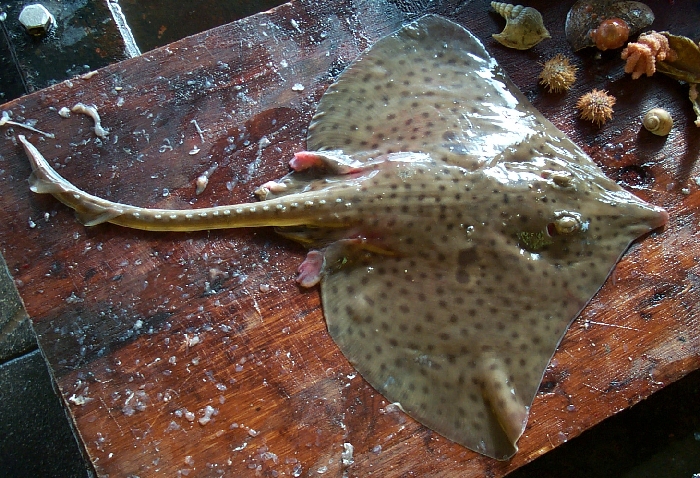



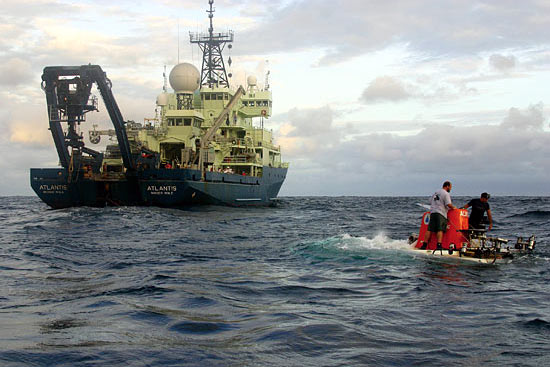
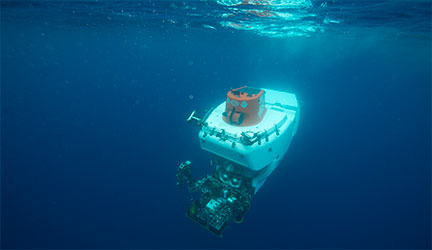
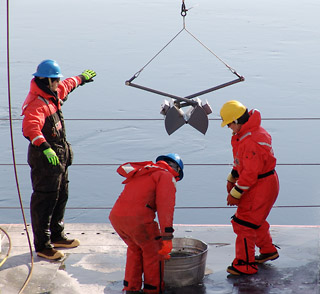






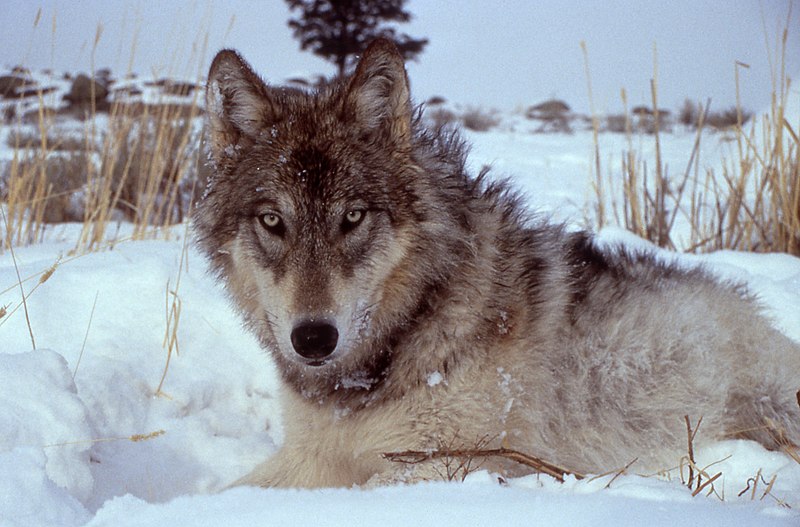
 The Sugar Hill reservoir covers 74 acres and is impounded by the Goshen Dam. Although not an exact representation of what happens at Silver Lake, the picture to the right may give you a general understanding of how hydroelectricity is produced. Water is released from the Sugar Hill reservoir through a 232-foot long, 4-foot square conduit outlet structure equipped with steel gate valves, and is then discharged to the Sucker Brook diversion dam. Sugar Brook is located about 2.6 miles downstream of the Goshen Dam. The intake structure at Sugar Brook dam is equipped with a wooden headgate and trashracks. The reservoir discharges into a 7,000 foot long penstock. From there, water discharges into a concrete raceway which extends 380 feet to Silver Lake. Water then enters the powerhouse at Silver Lake, which contains one 2.2 megawatt turbine generating unit. The powerhouse discharges into a 450 foot long tailrace that leads back to Sucker Brook. Power from the project is transmitted through a 6.9 kilovolt transmission cable that is connected to the regional grid.
The Sugar Hill reservoir covers 74 acres and is impounded by the Goshen Dam. Although not an exact representation of what happens at Silver Lake, the picture to the right may give you a general understanding of how hydroelectricity is produced. Water is released from the Sugar Hill reservoir through a 232-foot long, 4-foot square conduit outlet structure equipped with steel gate valves, and is then discharged to the Sucker Brook diversion dam. Sugar Brook is located about 2.6 miles downstream of the Goshen Dam. The intake structure at Sugar Brook dam is equipped with a wooden headgate and trashracks. The reservoir discharges into a 7,000 foot long penstock. From there, water discharges into a concrete raceway which extends 380 feet to Silver Lake. Water then enters the powerhouse at Silver Lake, which contains one 2.2 megawatt turbine generating unit. The powerhouse discharges into a 450 foot long tailrace that leads back to Sucker Brook. Power from the project is transmitted through a 6.9 kilovolt transmission cable that is connected to the regional grid. 